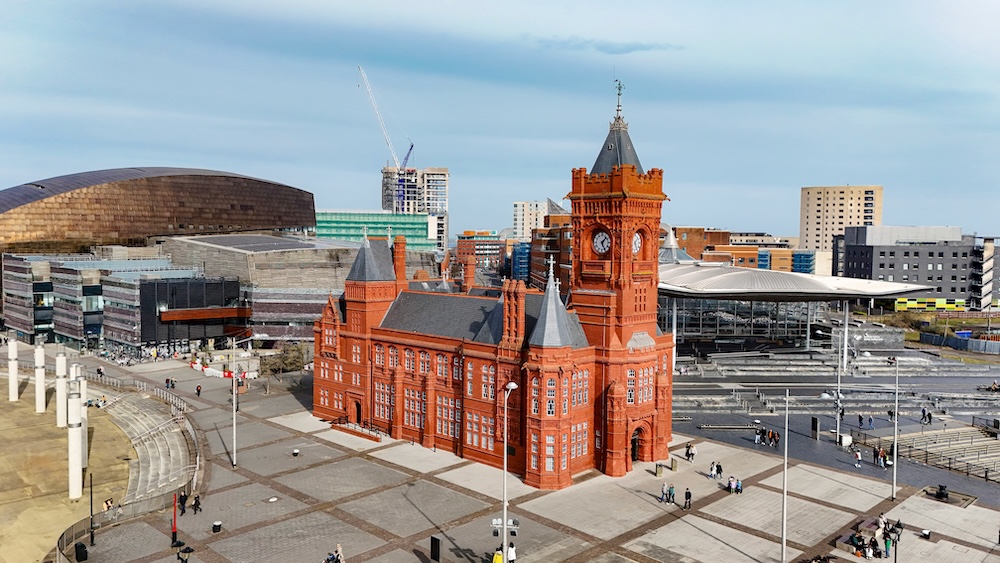As Labour claims victory in the 2024 General Election, Joe Rossiter asks what patterns are becoming apparent from the polls’ results.
Last night was a momentous election, with the Labour Party achieving a landslide victory across the UK. The result vindicates the consistent picture portrayed by nationwide polls over recent months, which highlighted this would likely be a ‘change’ election.
In Wales, the party regained a number of so-called ‘red wall’ seats that turned blue at the 2019 election (gaining nine overall), and won 27 of 32 seats, with Plaid Cymru winning four and the Welsh Liberal Democrats gaining their first seat in Wales since 2015.
The result meant an electoral wipe-out for the Welsh Conservatives across Wales, with the party returning no Welsh MPs to Parliament for the first time since 2001. This decline came from a historic 14 seats achieved in the 2019 election (albeit on boundaries prior to changes).
But beyond that there are some interesting sub-plots to the overall picture of Labour’s success.
Shifting Sands: A newly volatile electorate
Back in 2019, the Conservatives were riding high in both Wales and the UK, with Boris Johnson achieving an 80-seat majority. The reaction then suggested that it would take at least two election cycles before the Labour Party would see a UK government again. The electorate delivered a strong mandate for the Conservatives.
Yet, here we stand, five years later, with a Labour Government winning a majority of over 170, dwarfing that of the preceding election. Likewise, in Wales, their historic high of 14 seats achieved in 2019 has crumbled to nothing. Needless to say, such comprehensive swings are unprecedented.
When living standards are falling, public services are collapsing and infrastructure is crumbling around us, it is easy to see why the electorate may feel like the political process doesn’t deliver meaningful change.
It is also notable that the traditionally two largest parties collectively received less than 60 percent of the overall UK vote, the lowest they have ever returned. Of course, a halving of the Conservative vote is doing much of the heavy lifting here, yet it speaks to a fragmentation of the electorate and the broadening appeal of smaller parties.
But what does that mean for our politics?
Well, it tells us that party loyalty, historically based on allegiance to the Conservatives or Labour, has eroded. Post-Brexit, voters’ connection to parties is looser and this is making our politics less consistent, more unpredictable and more volatile. What this means for us going ahead is anyone’s guess, but making long-term political projections is increasingly difficult.
Falling turnout and disengagement
This election saw turnout falling across the UK, yet this was particularly evident in Wales, where turnout was down the most in the UK, by over 10 percent.
The reasons for this disaffection will become clearer over the coming weeks, but this is a disheartening sign for the health of democracy in Wales. One explanation could be that the result felt like a foregone conclusion to many. Polls were consistently showing a Labour landslide and Conservative Party candidates themselves appeared to admit defeat ahead of polling day.
Yet, another reason for a falling turnout could be the profound challenges that the nation faces. When living standards are falling, public services are collapsing and infrastructure is crumbling around us, it is easy to see why the electorate may feel like the political process doesn’t deliver meaningful change. Restoring faith in government as a mechanism for improving lives will, therefore, be a significant challenge for the incoming Labour Government, but a necessary one to reignite appetite for political participation.
Robust debate and agenda-setting research.
Support Wales’ leading independent think tank.
An electoral system flaws
Twas ever thus that the first-past-the-post electoral system, still used for Westminster elections, delivered a parliament which doesn’t fully reflect the votes cast across the nation. This can be seen across the UK but also in Wales. Welsh Labour romped home to gain seats despite losing almost four percent of their vote share compared to the previous General Election.
Likewise, with almost 17 percent of the vote, Reform UK came third in Wales, yet returned no MPs. The Conservatives gained 18.2 percent of the vote and also returned no MPs. Finally, despite a lower vote share of 14.8 percent (which was a record for them), Plaid Cymru gained four MPs.
The parties that have done well cannot and should not apologise for being tactically smart at this election, directing resources to contests that most needed them. Both Plaid Cymru and Welsh Labour ran smart campaigns suited to the UK electoral system. But such divergence between vote share and political rewards is one of the headlines of this campaign, further making the case for a system which better matches votes to outcomes.
Which brings us on to the Senedd elections looming in 2026…
Coming into view: the Senedd 2026 election
With a Senedd election in 2026, conducted under a new, proportional voting system, it seems that all is up in the air. With Welsh Labour’s lower vote share, the new proportional system may turn out to have significant effects on their Senedd representation if reflected in 2026. The political price will presumably be higher at a Senedd election, under a proportional system, than in the first-past-the-post Westminster system.
If the Labour Government fail to deliver on their key pledges, then the scale of challenge from parties like Reform UK on one side, and the Green Party and the Liberal Democrats on the other, will be keenly felt.
Smaller parties will see the Senedd election as the opportunity to reshape the political landscape in Wales even more profoundly. Plaid Cymru will look to build on their success at this General Election to gain a higher number of Senedd Members. Reform UK and the Wales Green Party will also seek to translate their vote share into a political presence in the Senedd. With Reform coming second in 13 Welsh constituencies and close to securing a victory in Llanelli (won by 1,504 votes by Labour’s returning Nia Griffith) they will feel buoyant.
The next 18 months will certainly be unpredictable for Wales as we slowly build to 2026.
From victory to delivery for Labour
It’s fair to say that the UK has delivered a strong mandate for the Labour Government, and they will have to use it. They inherit a country in a mess with a stagnant economy, poor public service performance, paltry investment and all too many struggling with the so-called cost-of-living crisis. Delivering against their five missions of government will need to start in earnest.
If the Labour Government fail to deliver on their key pledges, then the scale of challenge from parties like Reform UK on one side, and the Green Party and the Liberal Democrats on the other, will be keenly felt.
In Wales, the message that having a UK Labour Government delivering alongside a Welsh Labour Government has been at the core of their campaign. As we head towards a 2026 Senedd election, people in Wales will need to feel the benefits of this shift. Key policy challenges such as the certainty over the future of Tata Steel in Port Talbot, deciding the mechanisms for the repatriation of post-EU funds to Wales, and whether to deliver consequential funding from HS2, will all require swift answers.
Where do Conservatives go from here?
The most obvious takeaway from the election night has been the fact that the Conservatives have haemorrhaged votes at Welsh and UK level. Importantly, these losses were felt across the political spectrum. They lost votes to Reform on the right, and Labour, the Liberal Democrats, Plaid Cymru and the Green Party to the left and centre. Such losses represent a sobering picture for the party.
These swings will raise the question of where to go next,with time for a deep reflection on what went wrong and why. The diagnosis of the sickness will have implications for the cure.
In Wales, the party will have to build back through its Senedd representatives, with no-one left in Wales to represent them at Westminster. Will the party seek to distance itself from their UK counterparts, which will presumably be going through a profound period of transformation, or will they aim to develop a distinct Welsh identity? Either way, with 2026 coming around the corner, the Welsh Conservatives will have to act fast to turn their fortunes around.
Whatever happens next, this General Election has been a momentous occasion that has shifted the political landscape across Wales and the UK. Over the months ahead it will be fascinating to see where parties go from here. But more importantly, if and how new representatives and structures of government deliver for people in Wales.
All articles published on the welsh agenda are subject to IWA’s disclaimer. If you want to support our work tackling Wales’ key challenges, consider becoming a member.





